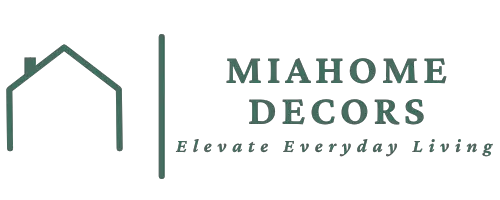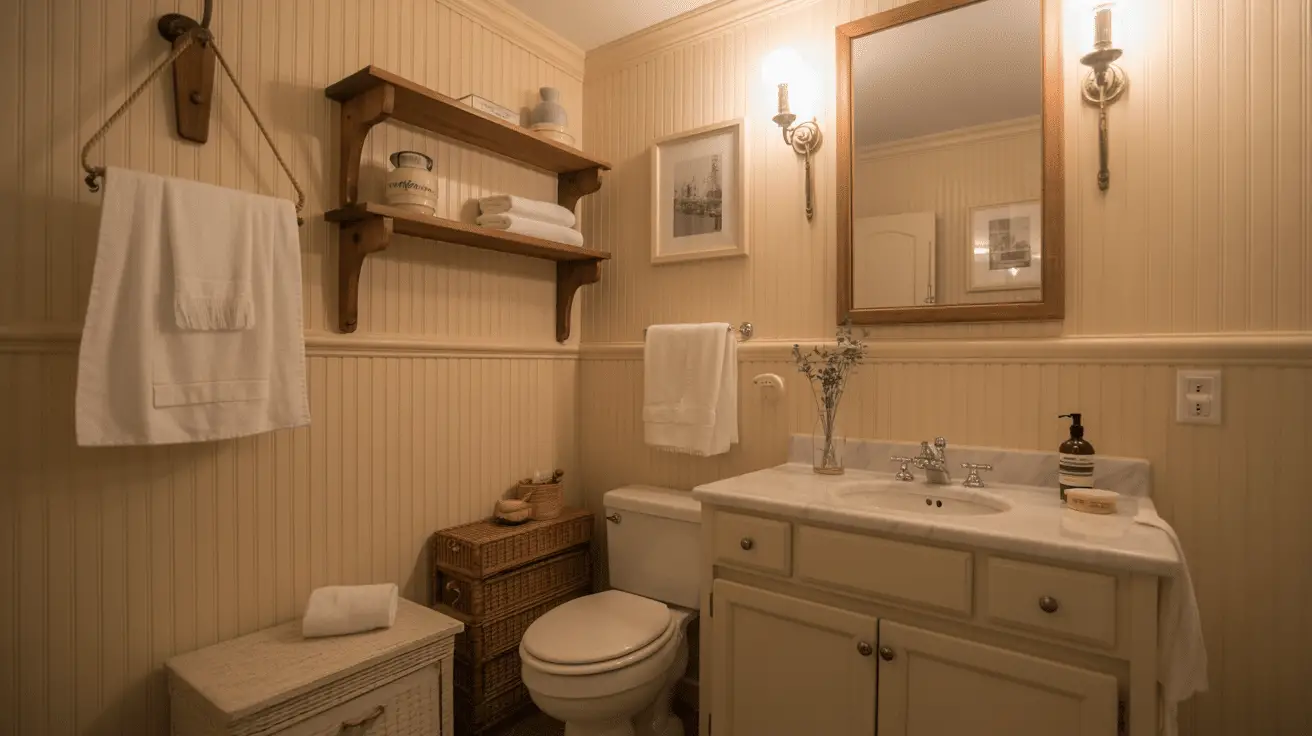Transform Your Space with Beadboard Bathroom Design: A Stylish, Timeless Touch for Your Home
Table of Contents
Introduction
When it comes to bathroom design, many homeowners often seek ways to blend style and function. Beadboard bathroom design is one of the most enduring trends, offering a beautiful yet practical solution to revamping your space. Whether you’re looking to add texture to your walls, create a vintage feel, or simply refresh a tired bathroom, beadboard offers a charming touch that transforms any bathroom into a cozy retreat.
Beadboard, often associated with traditional or cottage-style homes, is a versatile material that can fit into various design aesthetics, from modern farmhouse to coastal chic. Its classic appeal has made it a staple in bathroom design, providing both visual interest and durability. With its textured panels, beadboard can be used on walls, ceilings, and even as wainscoting, making it a perfect material for bathrooms that experience high moisture levels.
In this blog post, we will explore the many ways beadboard can elevate your bathroom. From design inspiration and installation tips to maintenance advice, this guide will provide you with everything you need to transform your space. Whether you’re remodeling or simply updating, beadboard is a timeless choice that adds character and charm to any bathroom.
The Timeless Appeal of Beadboard Bathroom Design
Beadboard has been around for centuries, and it’s easy to see why. This classic design feature, characterized by evenly spaced vertical panels, exudes an old-world charm that complements both modern and traditional bathrooms. Beadboard’s simple yet elegant design can instantly elevate your bathroom’s aesthetic.
One of the key reasons beadboard remains so popular is its versatility. It can be installed in various ways to achieve different looks. Whether you’re going for a vintage, nautical, or farmhouse-inspired bathroom, beadboard provides the perfect backdrop. Its texture adds depth to any room, making it an ideal choice for spaces that may otherwise seem plain or sterile.
From its aesthetic appeal to its functionality, beadboard is more than just a decorative element. It’s also practical, especially in high-moisture areas like bathrooms. The panels are often made from wood or engineered materials that are moisture-resistant, making them a durable option for bathroom walls. Additionally, beadboard’s insulating properties help to regulate temperature and provide soundproofing, contributing to a more comfortable bathroom environment.
How Beadboard Enhances Bathroom Style
Beadboard can completely transform your bathroom’s aesthetic, creating a cozy, inviting atmosphere while also serving practical purposes. One of its most striking features is its ability to add texture to otherwise flat surfaces. This added dimension helps to break up the monotony of plain walls, creating a space that feels visually appealing and well-rounded.
For bathrooms that feature neutral color palettes, beadboard provides a great way to add interest without overwhelming the room. When paired with white, light grey, or soft pastel tones, beadboard creates a calming, serene environment. For a more dramatic look, darker shades like navy, charcoal, or even black beadboard can create a sophisticated, elegant atmosphere that complements modern fixtures and lighting.
Another way beadboard enhances bathroom style is through its ability to fit with different decor themes. Whether your bathroom is minimalist, rustic, or vintage, beadboard can seamlessly integrate with various styles. For example, in a coastal-themed bathroom, beadboard can evoke the feeling of a beach house with its natural wood finish and whitewashed look. Alternatively, in a modern farmhouse bathroom, the combination of beadboard wainscoting and industrial fixtures creates a warm, lived-in feel.

Beadboard Installation: A Step-by-Step Guide
Installing beadboard in your bathroom can seem like an intimidating project, but with the right tools and knowledge, it can be a manageable DIY task. Whether you’re updating your bathroom with beadboard wainscoting or adding it to your walls, following a clear step-by-step process can ensure a successful installation.
Here’s a basic guide for installing beadboard in your bathroom:
- Gather Materials
Before starting the installation, make sure you have all the necessary tools and materials. This includes beadboard panels, a level, measuring tape, a saw, nails, a hammer, adhesive, and a pencil. - Measure the Wall
Measure the height and width of the walls where you plan to install the beadboard. It’s important to ensure that the panels will fit perfectly. If necessary, trim the panels to size using a saw. - Prep the Wall
Make sure the surface of the wall is clean and dry. If you’re installing beadboard over existing drywall, ensure the surface is level. You may need to remove old wall coverings or patch any holes. - Install the Panels
Start from the bottom and work your way up. Apply adhesive to the back of the beadboard panels and press them onto the wall. Use nails to secure the panels in place, making sure they are level as you go. - Finish the Edges
Once the beadboard is installed, use a molding trim to cover the edges where the beadboard meets the ceiling, floor, or corners of the room. This adds a polished finish and helps to conceal any gaps. - Painting or Sealing
If you’re using natural wood beadboard, you may want to paint or seal it to protect against moisture. For a modern look, opt for a fresh coat of paint in a color that complements your bathroom design.
Choosing the Right Beadboard for Your Bathroom
Not all beadboard is created equal, so it’s essential to choose the right type for your bathroom’s needs. There are various materials and styles available, each offering distinct advantages depending on your aesthetic preferences and budget.
The most common types of beadboard include:
- Wood Beadboard: Offers a classic, timeless look with natural grains and texture. However, it requires more maintenance than other options as it is susceptible to moisture damage if not properly sealed.
- MDF Beadboard: Medium-density fiberboard (MDF) is a popular alternative to wood because it’s more affordable and resistant to moisture. It is available in smooth or textured finishes.
- PVC Beadboard: Made from plastic, PVC beadboard is water-resistant and easy to maintain. It’s an excellent choice for high-moisture bathrooms and is durable enough for wet areas like shower stalls.
Each material offers different levels of durability, maintenance, and cost. For bathrooms with high humidity levels or frequent exposure to water, PVC beadboard is ideal. However, for a more natural, traditional look, wood beadboard may be more fitting, provided it’s adequately sealed.
The Benefits of Beadboard in Small Bathrooms
Beadboard is a fantastic choice for small bathrooms, as it helps create the illusion of space while adding charm and personality. The vertical lines of beadboard draw the eye upward, making the ceiling appear higher and the room feel more expansive. This optical illusion is especially useful in bathrooms with limited square footage.
Beadboard also works wonders in brightening up a small bathroom. The light-reflecting qualities of a painted beadboard finish can help to make the space feel lighter and more open. In small bathrooms, every design choice must serve a purpose, and beadboard provides both style and functionality in a compact space.
For smaller bathrooms with minimal natural light, consider painting your beadboard a light, reflective color, like soft white or pale gray. This will help bounce light around the room, creating the illusion of a larger space. You can also incorporate mirrors or glass shower doors to further enhance the feeling of openness.
Beadboard Maintenance: Keeping Your Bathroom Looking Fresh
Proper maintenance is key to keeping beadboard in top condition, especially in the moisture-rich environment of a bathroom. The material is durable, but regular care is needed to ensure it doesn’t succumb to damage from water, mildew, or general wear and tear.
Here are some tips for maintaining your beadboard bathroom:
- Regular Cleaning: Dust and wipe down the beadboard regularly to keep it looking fresh. For wooden beadboard, use a soft cloth and avoid harsh cleaners that can damage the finish.
- Moisture Control: Install a good ventilation system to reduce humidity levels in your bathroom. This will help prevent water damage and mildew growth on the beadboard.
- Repairs and Touch-Ups: If any panels get damaged, replace or repair them immediately. Small cracks can be filled with wood filler and repainted to maintain a seamless look.
With the right maintenance routine, beadboard can last for years, retaining its beauty and functionality.
Conclusion
Beadboard bathroom design is a timeless, stylish choice that can transform any bathroom. Whether you’re working with a small space or looking to add texture and charm to a larger bathroom, beadboard is a versatile and durable option. From installation tips to material choices and maintenance advice, this guide has provided you with everything you need to get started. Beadboard adds warmth, elegance, and personality to your bathroom while ensuring it remains functional and stylish for years to come.

